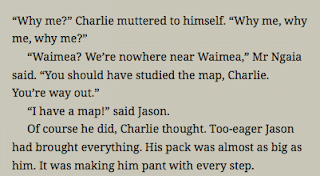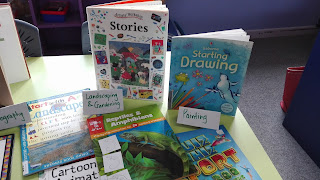For the second half of the year we at Tamaki are focussing on Maori student's writing. I have chosen five students from my class who are mostly from Maori backgrounds. What I have noticed with these students is that their writing lacks detail and depth. Most students in this group are not motivated enough to revisit their drafts to improve their stories. They are very reluctant to use illustrations/ exemplars to analyse their writing. Through my inquiry, I want to encourage these students to try and use specific and interesting vocabulary to create mood and effect in their stories.
My inquiry question is - Does specific teaching of new words help in improving the student's writing
Who are our target students for Writing in Term 3 and 4?
Hinemoa – AT level 1
Maani – AT L1
Dereon - ATL2
Leon – ATL1
Railey – BL1
What do we know about them socially?
All students respond very warmly. They are happy in class and in school. All except for Railey has English as his second language.
What can these students do?
RB
English is a second language for Railey. He is very fluent in Filipino and speaks Filipino at home. Railey is learning to construct sentences that make sense. He is becoming fluent at writing basic sight words. He also tries to sound out new words phonetically. He tries to learn spelling of new words. Railey is very unsure and so he constantly asks for help to make sure what he write is written correctly.
MR
Maani is fluent at writing simple sentences. She can write some compound sentences and is not very consistent with using her punctuation correctly. Maani is learning to elaborate on her ideas and is learning to use specific vocabulary in her writing.
HT
Hinemoa has lovely ideas but is not able to express herself clearly when writing. She is learning to use paragraphs for her ideas. Hinemoa is learning to use new words in her writing and is beginning to use capital letters and full stops in correct places. She is also learning to use interesting words to make her story capitivating.
LP
Leon had very detailed and elaborate stories when it comes to narrating them orally. He find it hard to write his story that makes sense. He is learning to use correct punctuation and powerful interesting words in his writing. Leon s learning to add detail to his ideas and use paragraphs for his ideas.
DR
Dereon writes extensive stories but sometimes his ideas are repetitive and so his stories can get monotonous. He is learning to put capital letters and full stops in correct places. Dereon is learning to use specific vocabulary and add interesting words to his stories. He is learning to use paragraphs for his ideas.
What steps would I take to improve outcomes for my target students in writing?
- Share a few good examples of writing and analyse these writings, particularly for Vocabulary and discuss why certain words can have more affect that others.
- Make word clines.
- Encourage students to use more specific words in their writing.
- Encourage students to identify and attend to new words that they come across while reading text.
What does “at expectation” look like for these students? How, by focusing on this, do I propose to contribute to and influence Student Achievement Outcomes?
I am hoping that in course of time, students will use interesting words which will come out naturally when writing. Students will understand the subtle differences in the synonyms of words and will fluently use the correct words to set the scene and develop mood, expression and feelings in their stories.
































